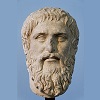10.7: The Aztec
- Page ID
- 11756
While the Itza were one of the last unconquered native civilizations in the New World, another post-classic kingdom drew the most attention from Mexico’s Spanish conquerors: the Aztec. The Aztec capital was the magnificent city of Tenochtitlán, founded around 1325 CE by a Nahuatlspeaking, previously nomadic group called the Mexica. Tenochtitlán was composed of a network of dozens of smaller city states who used the lake environment to plant wetland gardens and used raised causeways to separate the gardens and move around the city. Some fields were raised as well, a feat which drained them and helped them contribute to supporting a population that totaled around 300,000 people (including the population of the neighboring city of Texcoco). Eventually a network of canals was created that drained fields, fed crops, and provided for navigation with canoes. Not only were these raised fields a source of multiple crops, but also the lake provided wildfowl, salamanders, and algae.
.png?revision=1)
However, as the population grew to over a million, other means of support were needed, so the people looked to outside tribute. Beginning in 1428, the Mexica sought independence from their Tepanec patrons and allied with other outlying towns to form the Triple Alliance, which by 1431 dominated the basin where they made their home. The unified Aztec people were led by the Mexica ruler Itzcoatl and his advisors. In making an alliance with Texcoco, the Aztec were able to build a causeway between the cities and help improve the infrastructure of Tenochtitlán. They then began construction on the Great Temple, a central market, and a larger network of gardens or chinampas. The Great Temple would become the orienting point for the entire city and would become the site of thousands of human sacrifices.
.png?revision=1)
The Aztec are perhaps best known, and may even have grown infamous (like the Toltec and others before them), for practicing human sacrifice. However, the context in which these sacrifices take place reveals that they were not conducted in a wanton or random manner. First of all, for the new Aztecs, there was little tradition of and, therefore, little opportunity for community building to draw upon. Their rise to power had to have been quick and dramatic. Furthermore, they possessed a worldview that held that even though they had achieved greatness, decline was inevitable. This view was present in their philosophy and their ceremonies—including those of sacrifice. This view was also important for ritual victims, because upon their death, they believed that they would be freed from the burdens of the uncertain human condition and become a carefree hummingbird or butterfly.
For the Aztec, ritual provided a kind of protection against excess; there was order in it, even if it was violent. Men had no independent power, and gods were very abstract in their doling out of gifts. Finally, in the Mexica worldview, the earth receives rather than gives, much like it does in the Judeo-Christian tradition. Through fertility and death, humans satisfy that hunger. The process of birth and death is not “dust to dust” but the transition from one form of flesh to another. All man can do is order his portion of this natural cycle.


